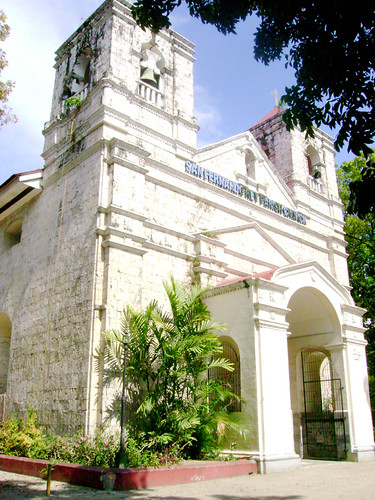
San Fernando Rey
San Fernando Rey in Liloan [li-loan] is a church shrouded with mysteries. Legend has it that the cave at the back of the altar is full of ancient treasures and that a sea creature protects it. This of course is a myth but stories like this add mystique to already a popular town, making the place more interesting.
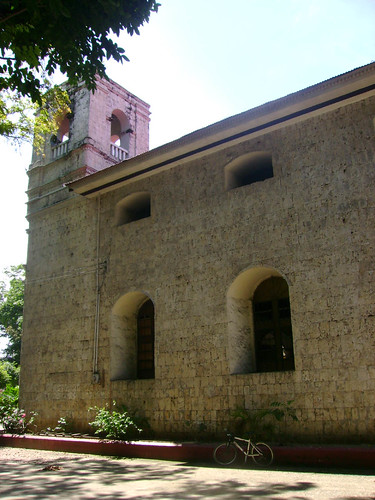
The meter thick wall. I'm amazed at how this church has been preserved
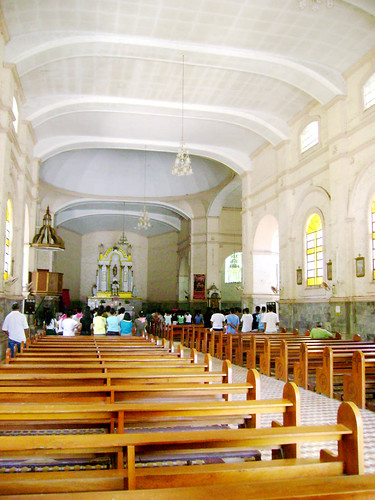
The interior
I tried to look for someone in the parish to talk to; I was not in luck, there was no one. I want to see the cave for myself, in the early days it was said to have been made accessible to the public. I’m certain that the cave is man-made, but when it was dug out, nobody's sure. But whether it was hollowed out in the 1800’s or during the Japanese occupation, I suspect that the purpose would be to hide possessions, if not lives.
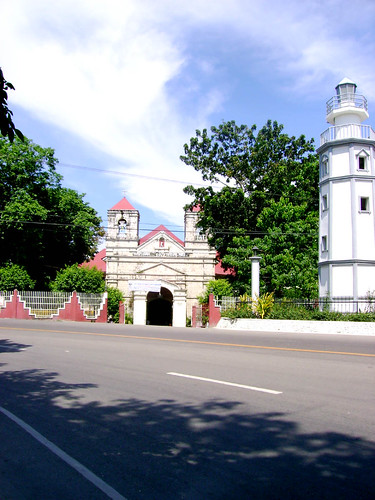
The Coral Stone church with a Parola replica
The Hispanic Cebu era had its share of pirates, Moro raiders sacking the rich southern towns of the province – and it makes sense that such an asylum exist inside the church, which during those years was where people would seek refuge from calamaties. During the brutal Japanese occupation this cave possibly served the same purpose.
I’ve heard that the cave is flooded with water, if this is the case, it could be similar in design with an ancient excavation made in Canada, where after the excavation, the hole was intentionally flooded to conceal the treasures forever.
I plan to go back in Lilo-an, hopefully, I could inspect this legendary cave and take pictures. I’m trying to contact people that could make this possible, a recent blogger, who writes about the town, was denied access by the current parish priest.
---
The Friars that built it were men of great vision; they knew the parish would grow so they built a church that would have the capacity to accommodate parishioners for centuries. There has been no expansion ever since, which is truly remarkable!
What’s also interesting is that it was built facing west, when it was standard practice to erect churches facing the sea, which is on the East. Nobody is certain why it was designed this way, Cebuano historians believe that the builders wanted to steer clear from the heat of the sun [since mass were held regularly in the morning]. But I left the place still with question in my head, why when all the churches was established facing the sea, why was Li-loan’s San Fernando Rey erected facing west?
My opinion is that the mission that planned building the church sought to pay reverence to the monarch saint by building a church that faces his kingdom in the west.
I could be wrong though.
---
Here I saw expert potters; they declare that theirs is the best lechon de leche, but every town here in Cebu claims superiority over the other towns, in the end, the proof is in the eating. Grill stands are also popular here, after tasting their grilled fish and sea weed salads; I could attest that life is good here. It must be. I was beginning to fall in love with the town that I’ve only known in books.
There is also a ruin of “Bantayan sa hari” in Barrio Celero, similar to Mandaue, these fortifications reach Daangbantayan, a sentry system as part of a defense plan laid out to protect the Christian population. The town is proudest of their Parola, built by Taft in the 1900’s. It’s a Beautiful monument of time, history and tradition of diligent Liloanons.
---
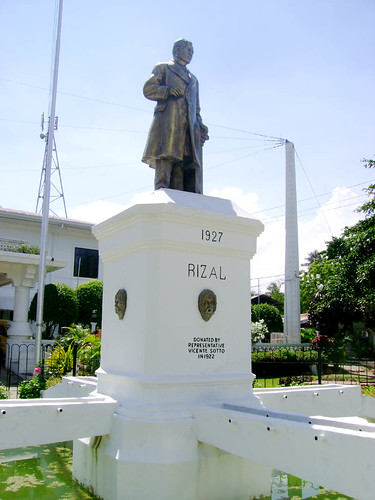
Another Rizal monument
Another Rizal monument in Liloan's town hall which by the way is a fascinating structure built during the American colonial years. But I was surprised to see who donated the typical Rizal bronze statue – a young representative named Vicente Sotto, a Cebuano literary genius and a respected statesman.



There could've been lots of treasures in that cave before. Maybe the Roxas clan already have them, LOL! (MAR: hindi ko kayo pababayaan... lalaban tayo! hahaha!)
ReplyDeleteThe Roxas are from Capiz bro anyway, if you remember the place in Sn Nicolas, the crumbling three storey structure in calle Madrid cor calle Penarubia - Roxas [not this artista, awful political ad by the way, but the former prez] attended school there when it was still Instituto de Manila.
ReplyDelete